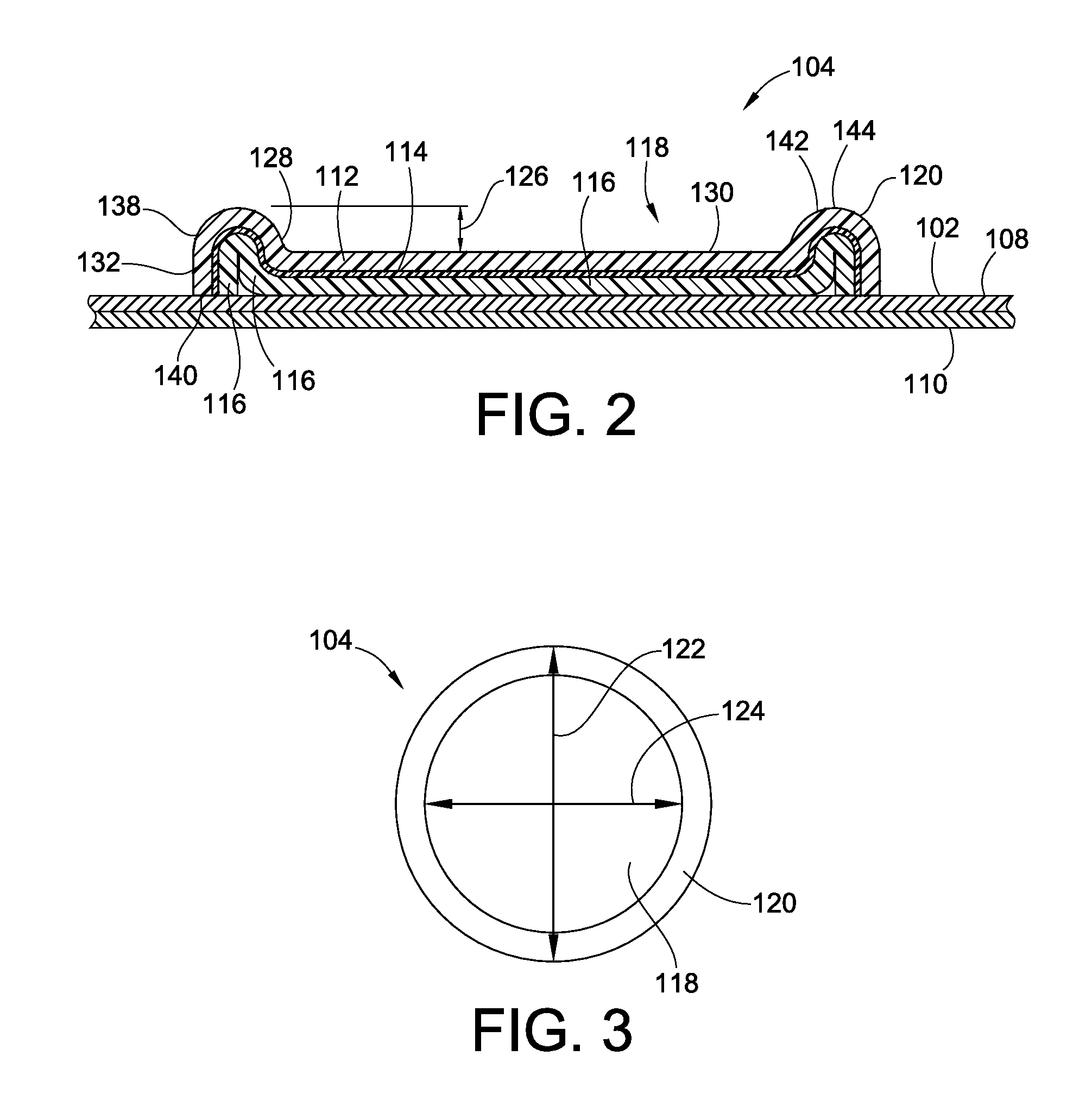Epicutaneous Patch Test Chamber
a technology of patch test chamber and absorbent pad, which is applied in the field of patch test units, can solve the problems of affecting the test, posing a risk of contamination, and often wasting tester time, and achieves the effect of good skin occlusion
- Summary
- Abstract
- Description
- Claims
- Application Information
AI Technical Summary
Benefits of technology
Problems solved by technology
Method used
Image
Examples
Embodiment Construction
[0044]Various embodiments of the present invention provide new and improved epicutaneous patch test units including embossed paper test chambers. The paper test chamber according to embodiments of the present invention solves aforementioned problems of the conventional test chamber by providing a one-piece test chamber formed of a multilayer material including at least one layer of suitable absorbent material, which serves as a carrier of liquid and petrolatum-based allergen. Further, the test chamber including the absorbent layer is configured to hold and / or absorb and release allergens such as petrolatum-based and liquid allergens.
[0045]FIG. 1 illustrates an epicutaneous patch test unit 100 according to an embodiment of the present invention. The test unit 100 generally includes a patch test tape 102, a plurality of test chambers 104, and a cover sheet 106. The patch test tape 102 includes an adhesive layer 108 and a substrate layer 110. The plurality of the test chambers 104 are ...
PUM
 Login to View More
Login to View More Abstract
Description
Claims
Application Information
 Login to View More
Login to View More - R&D
- Intellectual Property
- Life Sciences
- Materials
- Tech Scout
- Unparalleled Data Quality
- Higher Quality Content
- 60% Fewer Hallucinations
Browse by: Latest US Patents, China's latest patents, Technical Efficacy Thesaurus, Application Domain, Technology Topic, Popular Technical Reports.
© 2025 PatSnap. All rights reserved.Legal|Privacy policy|Modern Slavery Act Transparency Statement|Sitemap|About US| Contact US: help@patsnap.com



